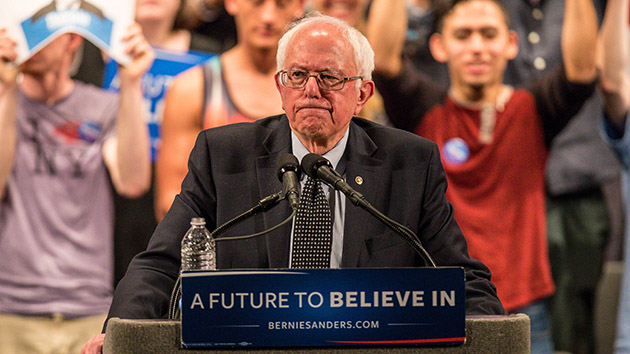
Tim Murphy/Mother Jones
The largest retirement community in the United States is home to 49 golf courses, dozens of restaurants, a college, an app, and three movie theaters spread across three counties in an area larger than Manhattan. Since the first trailers popped up in cattle country an hour north of Orlando, Florida, four decades ago, the Villages has swelled to a population of more than 114,000 people; almost all are over the age of 55, white, and drive around the community in golf carts that can be outfitted to resemble taxis, fire trucks, or tanks. Residents refer to the place as “Disney for adults.”
In addition to being one of the most quintessentially Florida places on Earth, the Villages is one of the most Republican places in Florida. For years its politics were dominated by H. Gary Morse, the late conservative megadonor who built the community and helped send Marco Rubio to the Senate six years ago and Mitt Romney to the nomination in 2012. On Tuesday night, voters there will go a long way toward determining who comes away with the state’s 99 delegates. Rubio, who spoke to an overflow crowd at a rec center here on Sunday, is staking his political future on a strong showing. But lately, everything is turning up Trump.
Last month, the New York real estate mogul won the Villages Republican straw poll in a landslide. And he’s looking strong in Sumter County, which consists almost entirely of the Villages, and where 47 percent of registered Republicans voted early—the highest percentage in the state. Trump backers are already planning a celebratory golf cart victory parade. “I think Trump is the only one that can save our government,” says Bill Garner, a retired Army veteran who runs Trump’s campaign operation here.
The Villages is a dreamscape of sorts—a college where no one ever goes to class, a summer camp where your parents never come to pick you up. The grass is a rich shade of green, and the daily newspaper is stuffed thick with classified ads, the way daily newspapers used to be. You are always living in that moment of spontaneous bliss just before the Cialis commercial begins. It is by outward appearances one of the happiest places on Earth, where residents sometimes greet people with the community’s motto: “It’s a beautiful day in the Villages!”
So why is Pleasantville all-in for the candidate of rage?
As he marches toward the Republican nomination, Trump has built his biggest margins in economically depressed areas—places such as Fall River, Massachusetts, and Buchanan County, Virginia, where manufacturing and extraction industries have dried up over the last few decades—and in racially polarized counties in the Deep South. His voters feel betrayed by the Republican establishment in Washington. Disney for adults is something else entirely. As Rubio told his audience on Sunday, “If you get to live in the Villages, it means you were probably pretty successful in business.” Trump’s appeal here is driven in part by animosity toward a different kind of establishment.
To understand how a paradise for retirees could throw its support to a guy whose platform is built on a chaotic disruption of democratic norms, it helps to understand one important thing about the community in question: The Villages isn’t a democracy. To the contrary—the Florida community that could propel Trump to victory has long been governed by a benevolent but authoritarian real estate developer with almost absolute power. Sound familiar?
In 1983, Michigan businessman Harold Schwartz bought out the partner with whom he’d owned a massive tract of central Florida farmland, and he brought in his son, H. Gary Morse. Inspired by the new brand of seniors-only communities popping up in Arizona, they built a nine-hole golf course to entice retirees to move to a small village of trailers they called Orange Blossom Gardens.
The concept showed promise, and they displayed a Trumpian flair for marketing their development, mailing VHS tapes to seniors in small towns across the northeast inviting them to move down. But the genius of the developers was how they organized their new community. As they expanded their community (they switched from trailers to housing developments in 1989), they played hardball with the three counties on which their properties sat. (Schwartz died in 2003.)
The holding company run by Schwartz and Morse accumulated more and more power by capitalizing on an arrangement it had worked out with the state, similar to the deal that allowed Walt Disney to build Disney World. The kinds of contracting and revenue decisions that would normally be the purview of the county government were instead handled by a council controlled by “the Developer” (as the Villages’ management is known to residents). In essence, the Developer replaced the traditional municipal government with a private government controlled by the Developer. The result is that one of the fastest-growing cities in the United States has no mayor—or for that matter, city council, assessor, or police chief.
The only check on what the Developer can do comes from the county government, but because almost everyone in the three counties lives in the Villages, and because the Developer has virtually unlimited resources to spend on local campaigns, the Developer exerts a great deal of influence on the county governments too. The growth of the Villages is impressive enough to leave longtime residents in awe of what a determined businessman can accomplish. It has also pissed off a lot of those same people.
Bill Garner, Trump’s campaign coordinator in Sumter County, lives a fairly traditional Villages life. Two or three times a week, he goes to the German club to dance the polka with Ursula, his wife of 54 years. They are both 77 and have lived in the Villages for the last 22 years. He walks for exercise and plays bridge twice a week, although he’s had to give it up in order to commit himself fully to Trump.
What lit a fire under Garner is an unshakeable fear that every other candidate is either too corrupt or too weak to address the national debt, illegal immigration, and the “Muslim situation.” He believes the only man who can save American democracy is a Putin-like strongman—someone like Trump. Garner’s politics have been shaped by his experiences working as a civilian contractor for the military overseas, and at home; last summer his son was laid off from his job as a computer programmer and replaced by a foreign worker with an H1B visa, and for that reason he says he will stay home if Rubio or Ted Cruz are on the ballot in November. But a major part of his political disillusionment stems from the Villages itself.
“Our government’s elected by the Developer; I consider that very unconstitutional,” he says, as we sit at a table on his back patio in front of a swimming pool and two very large ferns. Heavyset with a mustache and a shock of white hair, he has the look of an elderly, Republican Philip Seymour Hoffman.
Garner’s entrée to political activism came as a leader of an anti-establishment homeowners association. In the early 1990s, Villagers who believed that the existing Homeowners Association was too beholden to the Developer formed a second group, the Property Owners Association (POA), to represent their concerns. Their first show of strength came when Morse tried to charge residents a $10-a-month fee for unlimited golf. Morse argued that “the silent majority of our residents” was on his side; the POA picketed outside the course and blocked the entrance.
When Garner became vice president of the group, he spearheaded its crowning accomplishment: a lawsuit against Morse for misusing residents’ amenities fees. Morse had to spend $40 million on infrastructure improvements to the community as part of the settlement—and stop hoarding the best tee times.
Garner’s other major battle was well suited to his current line of work. He was disturbed by the number of illegal immigrants he believed were being paid under the table for construction and landscaping projects at the Villages, so he fought with the county to install E-Verify, an online program that allowed employers to check the immigration status of workers they hire. Now, he says, “we see a lot less Latinos working here in our recreation department.”
As he described the forces he was battling in his community, Garner was starting to sound a lot like the candidate he’s supporting. “The corruption starts right here—it took me about four or five years to figure out what was happening,” he told me. “These corporations, like the Villages, they write big checks to the Republican Party. I mean big checks. They pay to get their people in—it’s almost impossible for anyone else to get in [office]. That’s just how it is here. They control the county commissioners, they control the representatives to the state, they control our representatives to the federal government.”
In Florida politics, it was tough to find a bigger donor than Morse. His largesse extended to the highest levels of politics. At the 2012 Republican National Convention, he held a reception for Romney megadonors on his 146-foot yacht, “Cracker Bay,” in Tampa Bay. The Morse family and its companies channeled $1.5 million to pro-Romney super-PACs in 2012, and Morse also served as co-chair of Romney’s Florida finance team. Before that he was a bundler for John McCain and a “Ranger” for George W. Bush, meaning he’d raised at least $100,000 for Dubya. When Morse died in 2014, Rubio issued a statement praising him as a man who “looked at the pastures and prairies of Florida’s interior and saw the American Dream.”
Morse made sure his employees knew where he stood. In 2012, he sent a letter asking them to donate to Romney—and to mail their checks back to him so he’d know who had complied. Rubio’s visit to the Villages on Sunday was front-page news even before he showed up, with glowing coverage of his family’s immigrant story. Villages Democrats have complained of being forced to take down campaign signs for their candidates even as their Republican neighbors get to keep theirs up. (Trump supporters have also complained about being forced to remove their signs.)
“They used to have absolute power” over local Republicans, Garner says of the Villages’ higher-ups. But the 2016 election, the first since Morse passed away, has seen a fracturing of Villages Republicans that mirrors the crack-up of the larger conservative movement.
On paper, things still look good for Rubio. The Sumter County Republican Club president is running Rubio’s campaign in the county. But when South Carolina Gov. Nikki Haley spoke at Sumter County GOP’s Lincoln Day dinner on Saturday night, at a Gone With the Wind-themed Villages ballroom decorated with paintings of fox hunts, her attacks on Trump were greeted with so little enthusiasm that at one point the South Carolina governor acknowledged the tension. Afterward, one pro-Trump attendee angrily confronted the local GOP chair over Haley’s remarks, calling her comments on Trump “disgusting.”
When a group of Trump supporters held a golf cart parade through the Villages earlier this month, Carol Ferry sat shotgun in a vehicle that had been outfitted with a yellow tablecloth on top to resemble the front-runner’s famous mane. Although a supporter of John Kasich had threatened to ram the parade with his own golf cart, their rally had gone off without a hitch, she told me, as she sat, covered head to toe in “Make America Great Again” gear, in a lawn chair outside a Villages rec center last week. “There was another one held and it was like the police, the newspapers, everybody laughed at it,” she says. “This time it was pure respect.”
Ferry, who is 74, moved to the Villages from southern New Jersey more than a decade ago. Before she began volunteering for Trump’s campaign, she spent her free time participating in missing-person searches across the Sunshine State. One of the first cases she participated in was the search for Caylee Anthony, the Florida two-year-old whose disappearance (and death) made national news.
Ferry enjoys her life in the Villages, where she golfs, plays shuffleboard five times a week, and competes in two bocce leagues. But like Garner, she has grown wary of the powers that be—particularly when it comes to the coverage of the community in the Developer-owned newspaper, the Daily Sun. She has turned instead to a new independent site, Villages-News.com, which “tells it like it is” she says. “They are not being bought and paid for by the Developer. So if anything goes wrong in the community we need to know about, it’s all being reported, good bad or indifferent.”
The Villages has grown tenfold since Ferry first moved here, and it has lost some of its small-town feel in the process, as big box stores and hotels pop up to cater to the boom. Now she can walk around Spanish Springs, the community’s oldest town square, and not recognize anyone. She no longer feels safe hanging out at certain bars after 9 p.m., and she expressed concerns about outsiders coming into the community and using drugs. Living in a place where all the news is good news is great until the day you realize that’s not quite true—and then you don’t know what to think.
In many respects, the Villages is a kind of Donald Trump fantasyland, a world devoid of Muslims or almost any people of color, where the golf is always free and America has always been great. (Not satisfied with the actual history of the place, the Developer at one point hired a firm that had worked at Universal Studios to craft a series of historical plaques outlining an admirably complex fake history of the land that connects the community to Ponce de Leon, Thomas Edison, and a Spanish barkeep named “Silencio.”) People who decide to live here sacrifice core democratic values for luxury and convenience, and it has worked out pretty well so far.
Even a place as relaxed and insular as the Villages will fight back if you try to fence it in, though. In 2013, Morse built a wall and made the residents pay for it. It was 30 feet long, made of pre-fabricated panels and painted “Villages pink,” in keeping with the Old Spanish theme for that particular stretch of the Villages. The point of the wall, which was installed across a golf cart path that connected the community to a strip mall, was to keep outsiders from coming in and taking advantage of its amenities.
But it turned out that residents kind of liked the open border. It allowed for easier access to Walmart, and the wall presented a problem for the large number of seniors who often crossed the community’s boundaries for medical services—one doctor who now found himself on the wrong side of the barrier created an alternate route for his patients by removing a piece of fencing behind his practice. When the Developer plugged the breach, seniors found a new, more dangerous route: They drove their non-street-legal golf carts on the road.
The uprising to the wall was swift. A group of seniors protested at the Spanish Springs square until sheriff’s deputies asked them to disperse. Residents dubbed the barrier the “Berlin Wall.” Someone, presumably a Villages resident, spray-painted “Mr. Morse Take This Wall Down” on the Villages Pink paneling. After seven days, Morse caved to the demands. The wall came down.
















